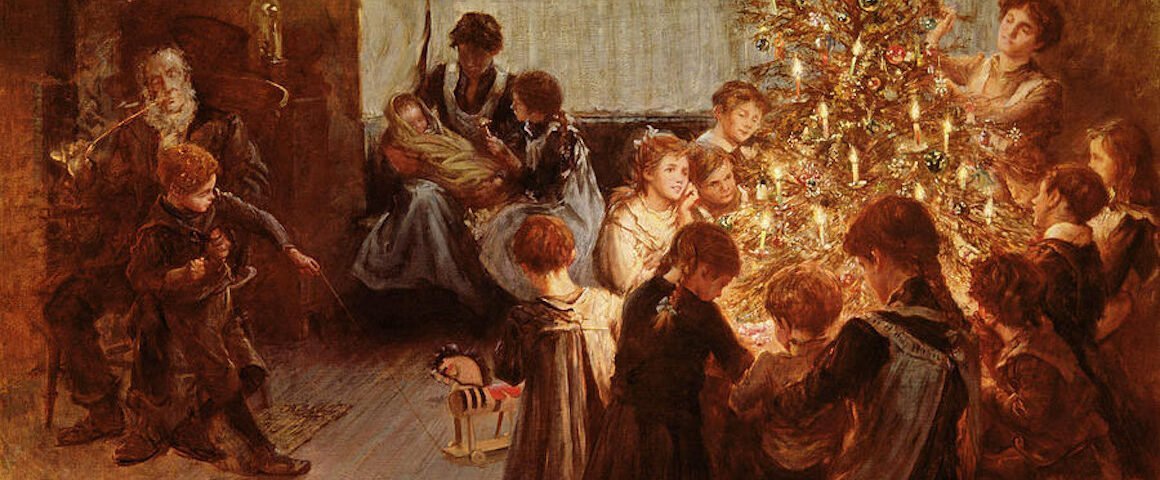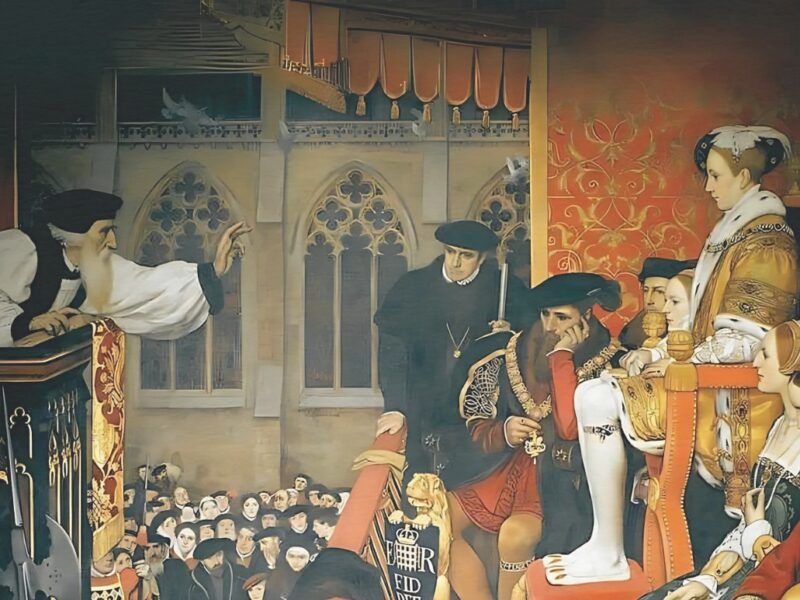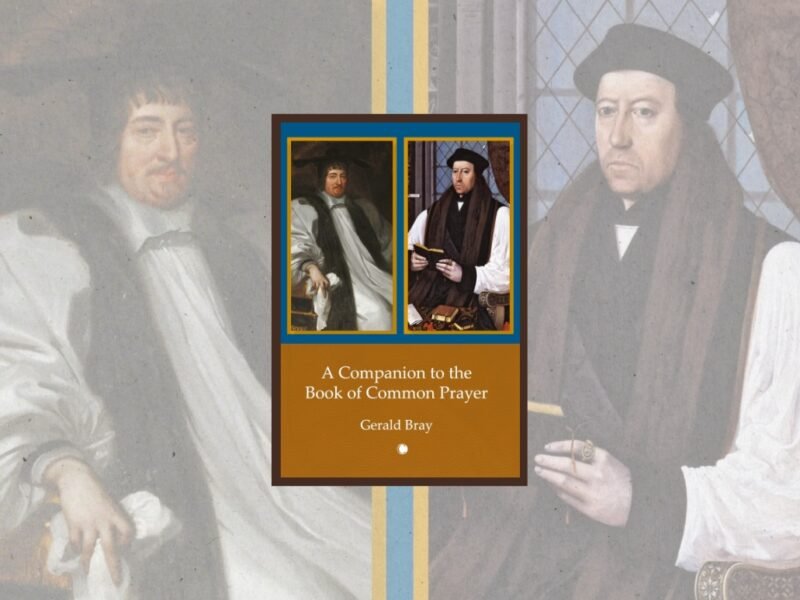I have long had an admiration for the “indefatigable” Rev. Dr. William Augustus Muhlenberg. If you’re unfamiliar, he was the father of American Schools and a spiritual giant to the Rev. James Lloyd Breck – the “Apostle of the Wilderness” and founder of Nashotah House – who went on to name his only son William Augustus Muhlenberg Breck. Muhlenberg was a brilliant educator, poet, and churchman; his influence on his students shaped what we now know as North American Anglicanism. Frederic Cook Morehouse went so far as to call Dr. Muhlenberg “perhaps the most original character in the history of the American Church” and that “his influence upon the Church was greater, perhaps, than that of any other man.”[1] Most notable was his work as a reviver of beauty in the Church’s worship. Considering that our branch of Christ’s Church grew into maturity on the frontier, calling its early worship rustic or plain is no exaggeration. The beauty that we now enjoy in our parishes can in no small measure be credited to Muhlenberg’s original use of “æsthetic ritualism.”
The first biography of Muhlenberg’s I ever read was Sr. Anne Ayres’ The Life and Work of William Augustus Muhlenberg, written in 1889. Sr. Ayres famously became the first life-professed nun in the Episcopal Church after speaking with Dr. Muhlenberg in the summer of 1845. Dr. Muhlenberg himself intentionally remained celibate and was a strong proponent of “Protestant Sisterhoods” – arguing convincingly for a biblical and evangelical monasticism within the Tradition even before the height of the Tractarian Movement and its Ritualist offspring. After her profession, sister Anne remained a lifelong friend and a great admirer of the holy Doctor, and many of the details of his life come from her recollections. She records how this beloved priest would do anything within his power to beautify the worship of our Lord and strengthen the piety of the young boys under his spiritual care. We know from her accounts (and the diaries of several of the boys), that these exercises in devotion soared to new heights during Advent and Christmastide. The descriptions really are lovely and maybe some of them will turn into other articles. Of them, however, there is one creation of Dr. Muhlenberg’s from her account in particular which has always haunted me: an original carol to be sung during the decoration of the chapel called The Wreath Makers’ Ballad.
Now, if you search for “The Wreath Makers’ Ballad” you will only find Sr. Anne’s telling of it. You can search Google Books, Internet Archive, and your university’s catalogs and you will not find a text called The Wreath Makers’ Ballad anywhere attributed to the Rev. Dr. William Augustus Muhlenberg. Neither is this little carol included in Dr. Muhlenberg’s beautiful collection of poems I Would Not Live Alway. All that we have is a single stanza recorded for us by Sr. Anne:
Go ye to the woodland,
Where the laurel grows,
Where the running vine is
Green beneath the snows,
Bring ye goodly branches,
Cedar, box, and pine,
To make the chapel beauteous,
Wreath on wreath we’ll twine.[2]
Beautiful, right? Unfortunately this is all we know of it directly. Sadly the biography does not give us the whole thing. The only other information that Sr. Anne provides us is that the piece was written by Dr. Muhlenberg to be a pendant (companion piece) to his Carol, brothers, carol. This just raises more questions, however, as there is no indication that Dr. Muhlenberg ever wrote such a carol! But you know who did? The Rt. Rev. Arthur Cleveland Coxe, the second Bishop of New York.[3] The parallels between the two poems are obvious:
|
Muhlenberg Go ye to the woodland, Where the laurel grows, Where the running vine is Green beneath the snows, Bring ye goodly branches, Cedar, box, and pine, To make the chapel beauteous, Wreath on wreath we’ll twine. |
Coxe Go ye to the forest, Where the myrtles grow, Where the pine and laurel Bend beneath the snow: Gather them for JESUS; Wreathe them for His shrine; Make His temple glorious With the box and pine. |
|---|
What are we to make of this? Did Bishop Coxe steal Fr. Muhlenberg’s composition? Did he write his own based on the work of our believed priest? It is unclear, but possible. Bishop Coxe’s poem does not show up in his collections until 1847 – after Muhlenberg was supposed to have written the carol for his schoolboys. This would seem unlikely though for two reasons: Firstly, Bishop Coxe’s poem is titled Carol, Carol, Christians! and not The Wreath Makers’ Ballad. Secondly, Bishop Coxe’s carol is subtitled For Christmas, and not For Advent. Whatever the case, the similarities are striking! Clearly there is a connection between the poetry of Muhlenberg and Coxe. If you’re like me, this makes it all the more interesting! You can’t be a lover of the American Patrimony and not also love Bishop Coxe’s several compositions. A collaboration between Muhlenberg and Coxe is a dream come true! A little more research, however, reveals that Coxe is not the only one to pen an Advent/Christmas ballad using the theme above. In 1902, The Catholic World – a magazine written by the Paulist Fathers – published an unattributed stanza that is clearly related to the one written by Fr. Muhlenberg.[4] Here are the three stanzas in parallel:
|
Muhlenberg Go ye to the woodland, Where the laurel grows, Where the running vine is Green beneath the snows, Bring ye goodly branches, Cedar, box, and pine, To make the chapel beauteous, Wreath on wreath we’ll twine. |
Coxe Go ye to the forest, Where the myrtles grow, Where the pine and laurel Bend beneath the snow: Gather them for JESUS; Wreathe them for His shrine; Make His temple glorious With the box and pine. |
The Catholic World Go ye to the woodland, where the laurel grows, Where the pine and myrtle, bend beneath the snows. Gather them for the Christ-Child, wreath them for His shrine, Ivy green and holly, for that night divine. |
|---|
At first glance it would seem that The Catholic World’s rendition is based on Fr. Muhlenberg’s poem. It uses his “Go ye to the woodland” and not Bishop Coxe’s “forest.” Where the “laurel grows,” and not the “myrtles.” Interestingly, however, a little further on and the stanza seems to follow Bishop Coxe’s rendition! If it was obvious which carol the The Catholic Word was derived from, we may have a clue as to whose came first. Alas, this is of no help at all! It seems to be some sort of composite from both poems. I do not see how it can be used to demonstrate which came first. What this stanza does indicate is just how widespread this carol became in the United States! Its composite nature is likely from oral transmission from hearer to hearer. It appears then that this little bit of Anglican folk piety supposedly written for Fr. Muhlenberg’s boys spread so wide that some seventy or so years after the fact, it was being sung (albeit lightly adapted) within a Roman Catholic context.
So is that the end of it? Can not more light be shed on Fr. Muhlenberg’s delightful composition? Is this piece of American Anglican piety lost forever? Fortunately not thanks to the magnificent librarian staff at Nashotah House Theological Seminary! They were able to help me discover that Brown University’s Digital Repository contains a scan of an old manuscript titled Ballad of the Wreath-Makers![5] Not an exact match with Sr. Anne’s description but closer than anything else I’d seen. What’s more, the document states that “the chorus [is] adapted from Mr. Coxe’s ‘Advent Carol’ which suggested the whole.” This poem preserved by Brown University has an explicit relationship with the poem by Bishop Coxe above. The Coxe poem is also called an Advent Hymn titled Carol, Carol which is precisely what Sr. Anne described the Wreath-Maker’s Ballad as a companion piece to! This Brown ballad may just be the Advent Carol that we are looking for! There are discrepancies, however. For example, here the stanza is compared to the one attributed to Dr. Muhlenberg by Sr. Anne:
|
Sr. Anne’s Rendition Go ye to the woodland, Where the laurel grows, Where the running vine is Green beneath the snows, Bring ye goodly branches, Cedar, box, and pine, To make the chapel beauteous, Wreath on wreath we’ll twine. |
Brown University’s Carol Seek ye in the woodland, ‘Mid the frosty scene, Running vine and laurel, Every leaf that’s green; Bring ye goodly branches, Cedar, Box, and Pine, The Chapel’s robe of beauty, Wreath on wreath we’ll twine. |
|---|
This poem is clearly derived from the Muhlenberg ballad. However, why does it say that it was inspired by Bishop Coxe’s poem when St. Anne tells us it was inspired by Fr. Muhlenberg’s own original poem? Why does it describe Bishop Cox’s poem as an Advent ballad when he lists it as a Christmas piece? Well, given that the Brown ballad is dated 1842 – contemporary with Dr. Muhlenberg’s writing of the ballad – and that Sr. Anne is writing forty or so years after the fact, she has likely misremembered who wrote Carol, Brothers Carol! She may also be drawing on an earlier form of the Wreath-Maker’s Ballad than the one later published, circulated, and then documented by Brown University. The Brown ballad fits too neatly into the narrative to not be the Advent Carol penned by Fr. Muhlenberg – or at least a very close derivative.
Thanks be to God we have such a fun little treasure preserved for us, and what fun it was searching it out! I for one am very excited to sing Fr. Muhlenberg’s ballad around the house this Advent as we prepare for the Feast of the Nativity. I would encourage others to use this regrettably forgotten piece of Anglican piety written for us by one of the most significant Saints of the Ecclesia Americana. Fr. Muhlenberg wrote this lovely carol as a gift for his children; what greater gift can we provide for our own? Whether parish or home, let’s sing along as we deck our halls and tie our wreaths! As we gather ivy and mistletoe! Holly and evergreen! Let’s bring a little more mirth to the season with the restoration of the wreath-makers tradition and its accompanying ballad. Let us “Carol Brothers, carol!”
The Ballad of the Wreath-Makers
Chorus:
Carol Brothers, carol
Carol joyfully;
Carol the good tidings
Carol merrily:
And pray a happy Christmas
For all good Christian men –
Carol Brothers, carol,
Christmas comes again.
I
Seek ye in the woodland,
‘Mid the frosty scene,
Running vine and laurel,
Every leaf that’s green;
Bring ye goodly branches,
Cedar, Box, and Pine,
The Chapel’s robe of beauty,
Wreath on wreath we’ll twine.
Chorus
II
Find ye snow-white flowers,
Let the Altar bloom,
Light full many a candle,
Burnt sweet perfume,
Gloria in Excelsis,
The Choral Boys shall sing,
Venite Adoremus,
Shall at Matins ring.
Chorus
III
Ply the wreath, then, Brothers,
As those before ye here,
Weaving holy garlands,
Have from year to year;
Evergreens eternal,
Christian truth and love,
To deck the heart for keeping
Christmas-day above.
Chorus
Setting by
T. Jordan OByrne
 Loading...
Loading...
 Loading...
Loading...
Notes
- Frederic Cook Morehouse, Some American Churchmen, Chapter VIII. ↑
- Sr. Anne Ayres, The Life and Work of William Augustus Muhlenberg, Chapter X. ↑
- The Rt. Rev. Arthur Cleveland Coxe, Carol, Carol Christians. ↑
- The Catholic World 1902-01, Vol. 74, Iss. 442, 433. ↑
- Brown University’s Digital Repository, Ballad of the Wreath-Makers. ↑







'The Wreath Makers’ Ballad: Some Advent Folk Piety' have 2 comments
November 28, 2022 @ 1:42 pm CMM
A fascinating history, Mr. LeTourneau, and well worth researching and publicizing. Thank you for making it available.
I wonder if you are related to R. G. LeTourneau, and if so, in what way?
November 28, 2022 @ 2:52 pm Brandon LeTourneau
Thank you! And yes I am related to ol RG. He’s my Great-great-great-great uncle.